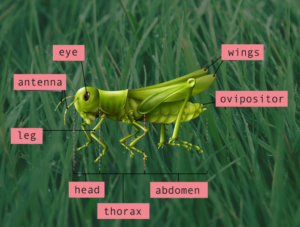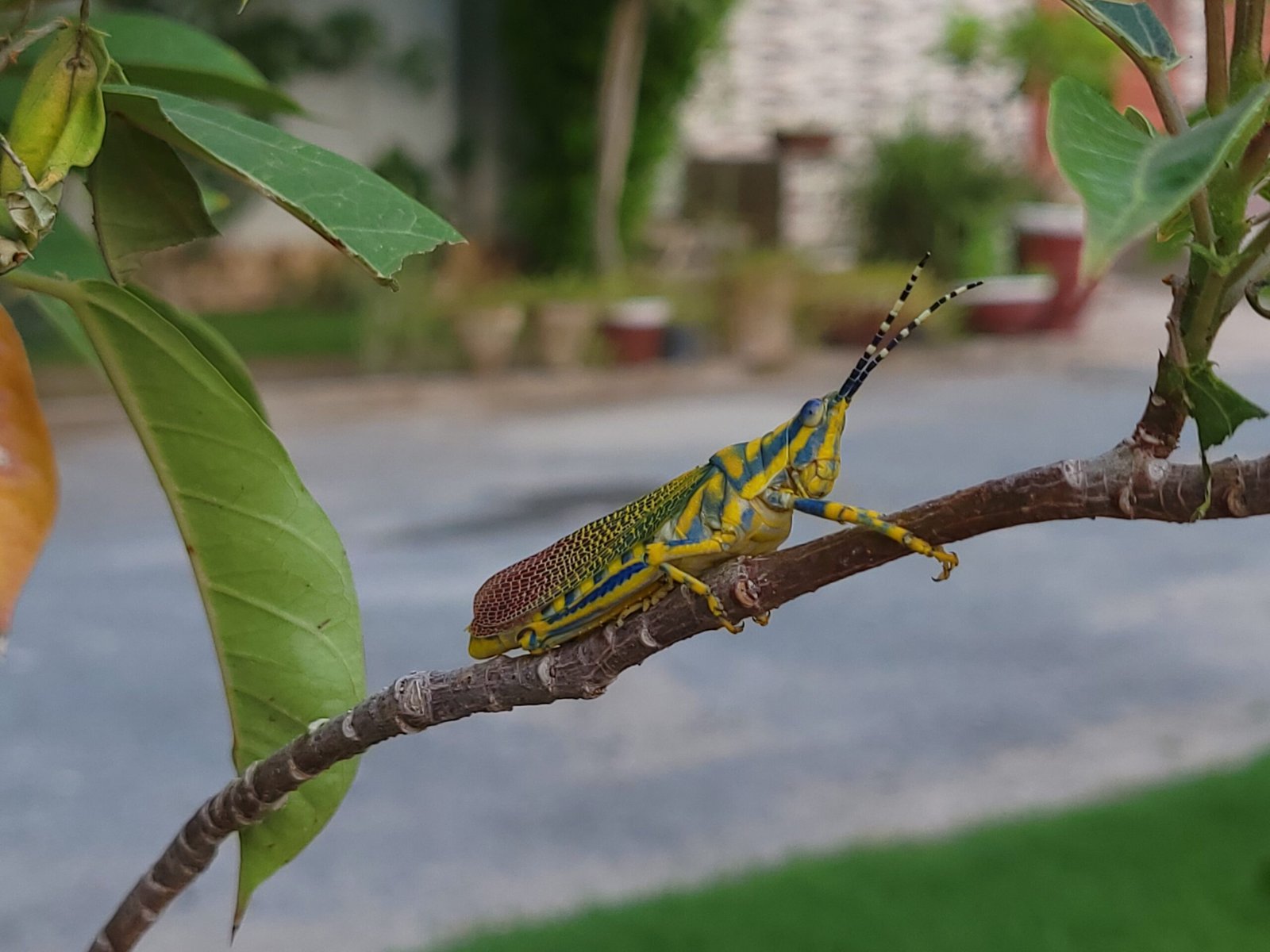For many years, scientists and nature lovers have been captivated by the small but captivating grasshopper insect. The grasshopper, which is well-known for its amazing jumping prowess and unique chirping sounds, is an essential member of the ecosystem. We’ll go inside the world of grasshoppers in this blog, looking at their anatomy, behavior, ecological significance, and creative inspiration from humans.

1- A More Detailed Examension of Grasshopper Anatomy
More than just skilled jumpers, grasshoppers’ anatomy is a wonder of natural engineering. These insects, which are members of the Orthoptera order, have an intricate body structure meant to aid in their survival.
-
Head and Mouthparts:
The broad, complex eyes on the head of the grasshopper allow for a broad field of vision. Its mouthparts are designed to eat plant matter, which is necessary for its diet, which is herbivorous.
-
Legs and Thorax:
There are three pairs of legs in the thorax, and each has a distinct purpose. Especially the long and strong hind legs allow for spectacular leaps.
-
Wings:
Two sets of wings are common in grasshoppers. While the hind wings are membranous and utilized for flight, the forewings are more leathery and protect the bird.
-
The reproductive and digestive systems:
Located in the abdomen, which is frequently divided into sections to provide for flexibility.
Knowing this anatomy helps us understand how grasshoppers work as well as how their physical characteristics help them survive.

2-Conduct and Life Cycle: From Adolescent to Adult
Grasshoppers go through a fascinating life cycle, going through several stages before they become adults.
- Stage of the Egg: A grasshopper’s life begins with an egg, which is usually placed in the ground or on vegetation
- Nymph Stage: The grasshopper hatches into a nymph, which is essentially an adult in smaller form without wings. Nymphs lose their exoskeletons multiple times during molting in order to grow
- Adult Stage: The grasshopper molts once more to become an adult after attaining full size. It obtains fully grown wings and the ability to reproduce at this point.
Grasshoppers demonstrate a variety of activities during their life cycle, all of which are essential to their function in the environment. These behaviors include searching for food, mating rituals, and territorial displays.
3-Grasshoppers’ Function in the Environment and Their Ecological Significance
Grasshoppers are important members of their ecosystems and are more than just interesting animals.
- Food Source: A variety of predators, such as birds, reptiles, and mammals, rely heavily on them for food. Their existence promotes ecological equilibrium and biodiversity.
- Plant Dynamics: Grasshoppers affect the growth and dispersal of plants by eating on vegetation. They can sometimes have an effect on agricultural yields, which makes them both advantageous and difficult for agriculture.
- Soil Health: By facilitating nutrient cycling and soil aeration, their eating habits support robust soil ecosystems.
It is clear from learning about their ecological roles that grasshoppers are more significant than they may first appear
4-Grasshoppers in Human Ingenuity: Solutions Inspired by Nature
Grasshoppers have served as an inspiration for several technological advancements, highlighting the creative influence of nature.
- Mechanisms of Jumping: In order to create cutting-edge robots and prosthetics, engineers and designers have researched the mechanics of jumping in grasshoppers. Their leaping efficiency provides information that can be used to create robots that jump more successfully.
- Sound Production: Acoustic engineering has benefited from the study of grasshopper chirping, which has enhanced sound detection and analysis tools.
- Biomimicry in Design: Designs in the fields of aerodynamics and materials science have been influenced by the structural adaptations of grasshoppers, such as their wing mechanics
Through analyzing how technological innovations are influenced by grasshoppers, we may recognize the convergence of human creativity and natural phenomena.
In conclusion, the grasshopper provides a rich tapestry of study and inspiration due to its complex anatomy, intriguing behavior, ecological relevance, and influence on human ingenuity. We can better appreciate this amazing insect and its contributions to nature and technology by looking into these elements.


4 thoughts on “Discovering the Anatomy, Behavior, Ecological Impact, and Technological Inspiration of Grasshoppers “Unveiled””